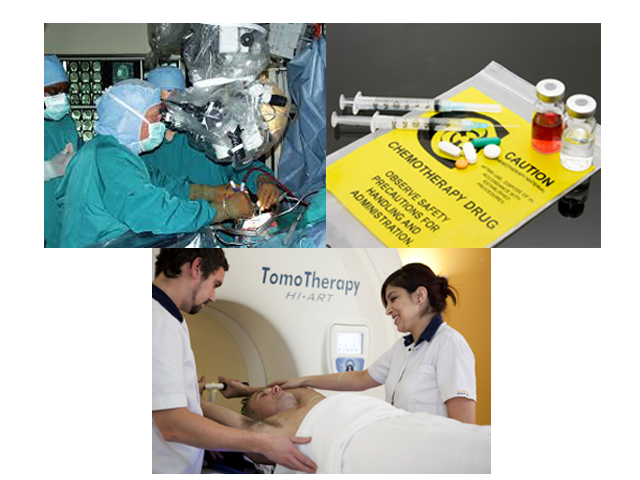Brain Tumors Treatment
Brain tumors grow and compress normal brain tissue. Both benign and malignant tumors can cause swelling of the brain and raised intracranial pressure. Headache, dizziness, visual blurring and epileptic seizure are the common presentating symptoms of brain tumour. Other symptoms vary and mainly depend on the location of tumor at different region of the brain to affect different brain functions.
Method of treating brain tumors include: steroids, anit-convulsants, surgery, radiation therapy and chemotherapy.
Treatments can be single or combination of the above.
Prompt and early treatment
Prompt and early treatment of brain tumour can prevent or reduce neurological deficits. For example, steroid therapy to treat brain swelling and anti-convulsive medication to treat or prevent epileptic seizures.
Steroid therapy
Steroid can remove swelling or extra brain fluid of adjacent normal brain tissue around the tumour. It will make patients feel more comfortable and lead to dramatic symptomatic improvement. Steroid is usually used before, during and after surgery and radiotherapy.
Definite treatment
Choice of definite treatment for brain tumour depends on:
- Tumor size, type and location
- The patient's age, medical history and general health.
Surgery
Most benign brain tumor can be completely removed by surgery. For brain cancer, neurosurgeon may decide to remove part of the tumor in order to reduce the pressure on normal brain, so to improve patient's symptoms.
Brain tumor surgery, normal involve opening of skull bone, i.e. also known as craniotomy。 The surgery require general anesthesia, and usually require hair shaving. The aim of the surgery is to remove the tumor while preserving normal brain tissue and its vessels, so as to preserve normal brain function.
Highly malignant brain tumor - malignant glioma or Glial Blastoma Multiforme ( GBM) is well known brain cancer. Brain cancer, despite its invasive nature to surrounding brain, usually do no spread to other organs of the body i.e bone, lung or liver. However it will spread out finger-like extensions in all directions to invade surrounding important brain tissues such as motor area of the brain, brain stem, or even cross the midline to the opposite side of the brain. The invasion cause complete surgery tumor resection very difficult, and with considerable risks leading to serious neurological complications. In that instance, for patient safety and to preserve patient's intact neurological function, limited tumor resection to reduce intracranial pressure inside head, later supplemented by radiotherapy or chemotherapy is the best treatment option. Brain cancer cells may also spread to spine via cerebrospinal fluid.
Radiation therapy
Radiation therapy is the use of high-energy radiation to destroy cancer cells, making them unable to breed, while minimising the damages to surrounding healthy brain cells.
Brain cancer, after surgery, usually require whole brain radiation therapy. Radiotherapy is to be performed on daily basis over 4 weeks duration. Target chemotherapy may be given at the same time of radiation therapy to enhance treatment efficacy.
Radiosurgery ( i.e. Cyberknife, Gamma-knife, or X-knife ) is a kind of focal radiation treatment to small volume of tissue target i.e. tumour cells only. Its main application is for small benign tumour of less than 3 cm in size e.g. acoustic neuroma or inoperable deep seated benign tumor i.e. meningioma, etc.
Chemotherapy
Chemotherapy drugs kill cancer cells by disrupting the cycle of cancer cells growth and cell division. Sometimes it is used alone or combine with radiation therapy. Chemotherapy for brain tumors is usually given as outpatient basis.






